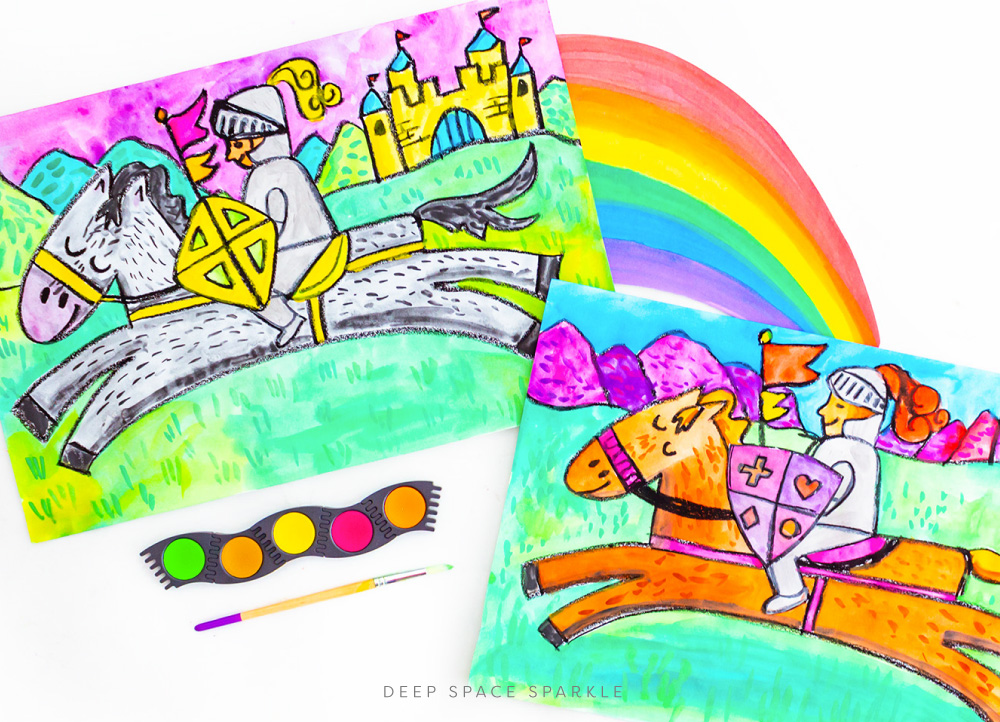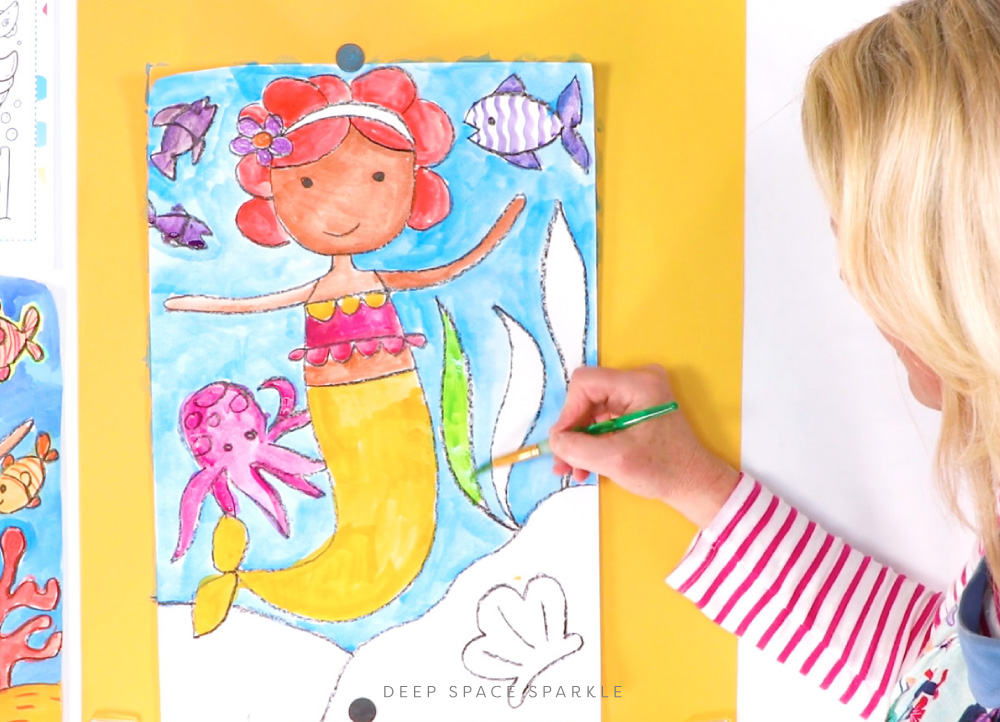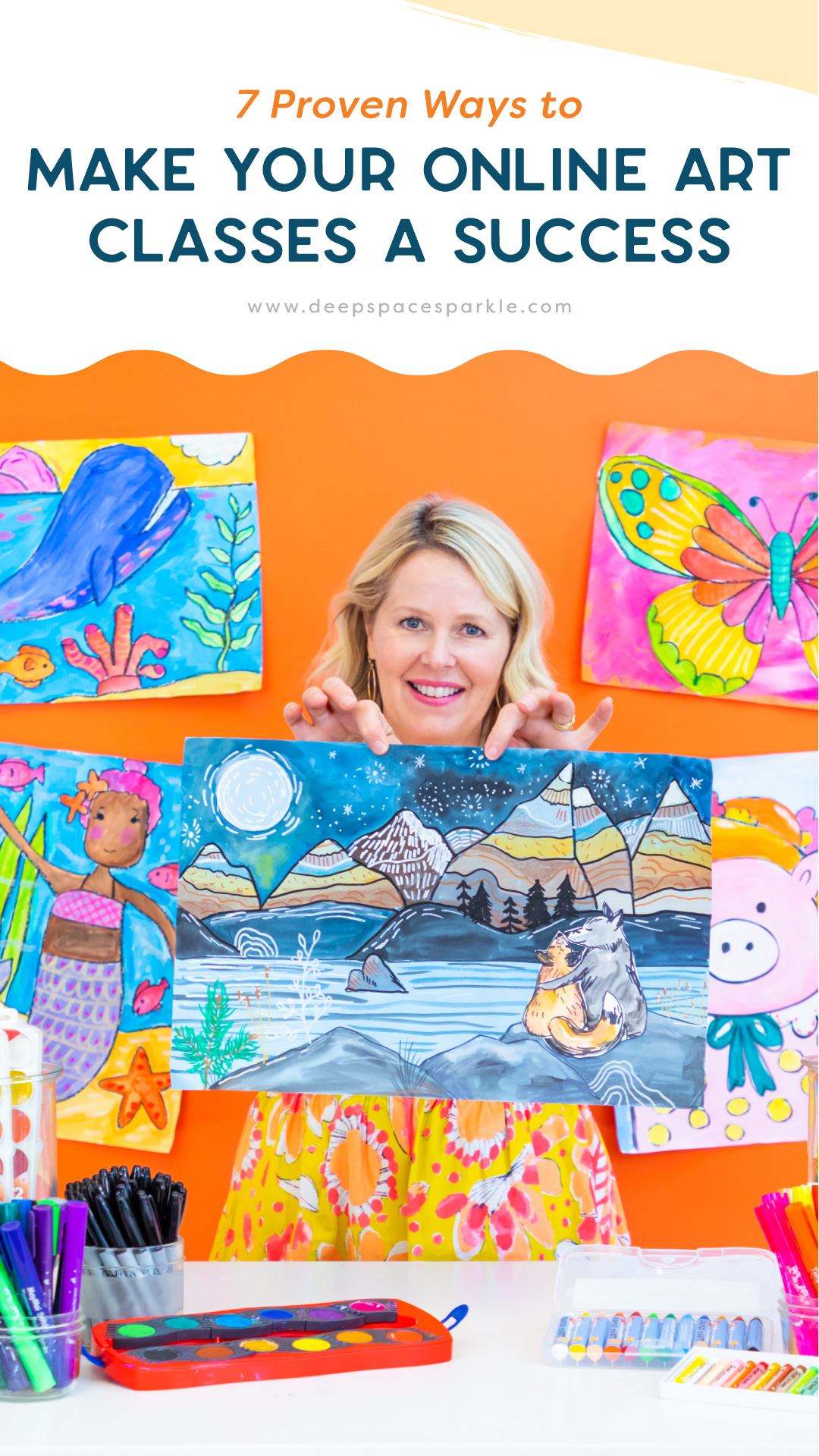Creating engaging and successful online art classes for children involves more than just repeating projects you may have done in your school art room.
As the host of Primerry, our online art membership for kids, I’ve learned a lot about what works and what doesn’t
I’m taking you behind the scenes for a peek inside the art projects that were a hit and those that flopped.

1. Set Clear Expectations
Clearly define the scope of your classes to avoid confusion.
For instance, if your class focuses on drawing and painting for kids aged 5 to 10, make that clear. This helps attract the right family and ensures that parents and kids know exactly what to expect.
When expectations are set upfront, students are more likely to be engaged and successful.

2. Choose Projects That Spark Imagination
Kids are naturally drawn to projects that evoke a sense of wonder.
Projects featuring magical themes, fantastical elements and of course, cute animals, often capture their imagination and keep them motivated.


3. Keep Materials Simple and Accessible
One of the biggest challenges with online art classes is ensuring that students have the necessary materials at home.
Opt for projects that use common, easy-to-find supplies like crayons, markers, and watercolor paints. Avoid materials that are hard to source or messy, like glitter, which can be a hassle for parents to manage at home.

4. Design Projects with Easy Setup and Execution
Make sure your projects are straightforward and don’t require complex setup.
Simple activities, such as draw-alongs with basic paints or creating structures using printable templates, are often more successful.
Kids and parents appreciate projects that are easy to follow and don’t involve a lot of preparation.


5. Incorporate Techniques Kids Enjoy
Kids love learning new techniques, especially when they’re visually engaging.
Projects that teach basic drawing and painting techniques tend to be popular.
Incorporating elements like mixing paint colors, using interesting materials like paint markers or demonstrating how to add layers and contrast adds to the complexity and therefore interest of many artists.

6. Adapt Classroom Successes for Online Learning
Not all projects that you typically teach in a school environment translate well to online formats.
For example, complex printmaking or intricate collage techniques may not be as engaging online as they are in a physical classroom.
Focus on the projects that are visually appealing and interactive, but also manageable within a home setting.


7. Encourage Families to Create Art Together with Collaborative Projects
Projects that encourage family participation can be particularity effective.
For example, canvas painting activities where families choose their colors and create together not only make art more enjoyable but also strengthen the family bond.
These projects often receive positive feedback and generate more interaction.
I recall one Primerry member who for Mother’s Day, painted Van Gogh Flowers with her mother and daughter. So sweet!
I Want to Learn How to Run a Business!
Learn everything you need to start and grow your business teaching art lessons to kids. Enrollment for Primerry Pro opens September 26th. Join the waitlist HERE.
When transitioning art classes online, it’s crucial to adjust your approach to suit the virtual environment.
By focusing on clear expectations, accessible materials, engaging techniques, and family-friendly projects, you can create a successful and enjoyable online art experience for kids.
I hope these insights help you refine your online art classes. Learn more about how to teach virtually, start an art business and get access to art projects designed exclusively for business owners at Primerry PRO.















brilliant. perfectly put together and fabulous just like you xxxo farmer sue